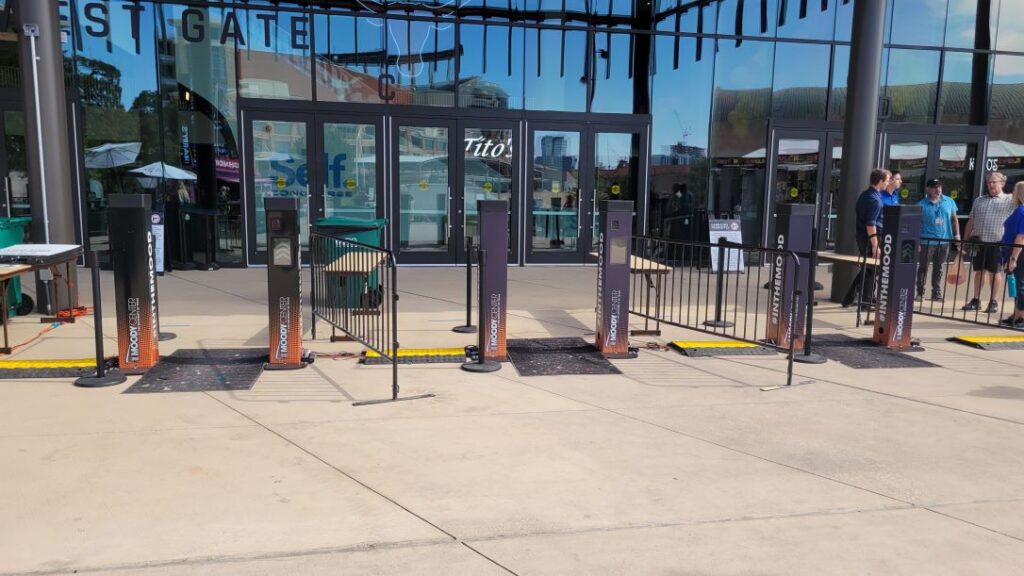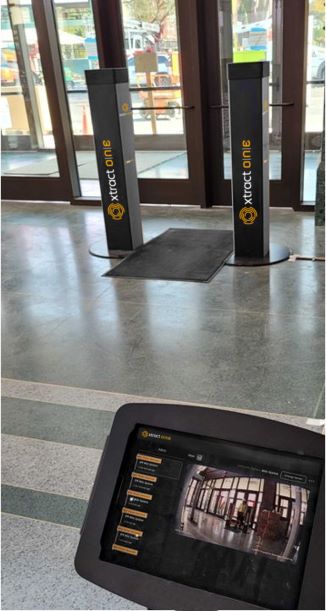By Peter Evans
During a fourth-quarter timeout of a pivotal playoff game between the Dallas Mavericks and Phoenix Suns, Phoenix point guard Chris Paul wasn’t talking with his teammates. He was huddled with police and venue security after rowdy and unruly fans harassed and made physical contact with his family behind the team bench.
The offenders were removed from the arena and banned from NBA venues for a year, but the incident is emblematic of a troubling trend at live events. Fans are increasingly behaving badly, and venue operators are having to adapt their security strategies.
Instances of unruly fan behavior – from verbal assault to physical violence – are on the rise. As The Washington Post succinctly reported last year, “As the crowds have increased, so have episodes of disturbing misbehavior.”
These encounters expand beyond just professional sports. High school administrators and youth sports leagues are grappling with unruly fan behavior and threatening situations from students, parents and other patrons.
Stadium owners, management groups and administrators are taking notice. Their rationale is simple: disorderly conduct by some undermines the experience for all. Patrons will be less willing to pay for the tickets, concessions and souvenirs that help make sports profitable if the in-person experience isn’t exceptional, or if it is a risk.
In other words, why would people attend in-person events when they can enjoy a safer, simpler experience on their HDTV at home?
Digital transformation and innovation can help alleviate these challenges, enabling venue owners and operators to provide safe, secure and compelling fan experiences that keep people coming back for more.

Digital transformation meets physical security
Digital transformation has disrupted and forever changed virtually every sector of life. However, physical security has remained a labor-based model built dozens of years ago based on different societal expectations than today.
This is especially problematic as venues have struggled to attract and retain staff since the pandemic. According to industry analysis by Security Management, 95 percent of venue security professionals surveyed said they “experienced staff shortages over the past two years.”
Broad labor shortages and rising costs related to talent scarcity have made security a unique challenge just when venues need it the most.
Digital transformation can revolutionize security by providing better data and enhancing fan experiences. For example, Artificial Intelligence (AI) technologies empower advanced systems for weapons detection, threat identification and patron verification. These sensors are able to detect unique properties for each type of item, and the AI and machine learning engines are able to correlate the data to accurately categorize the item (or items) carried by an individual.
Powered by intelligent video surveillance, AI-driven solutions allow venues to move beyond metal detectors, stop-and-frisk techniques, and ticket scanning processes to provide a more secure, frictionless and flexible entrance experience. These technologies leverage sophisticated sensors, powerful big data analysis, and real-time risk assessments to provide actionable intelligence to in-person professionals.
At the same time, digital transformation provides a wealth of data that can support a variety of security and operational outcomes. Like online retailers who know about their customers when they return to shop, data-driven insights can radically change how we experience an event – including managing facility traffic, parking lines, patron screening, ticket verification, alcohol purchases, merchandise arrangements, and more.
For example, in 2021, the New York Mets began investigating facial recognition software and AI to authenticate season ticket holders, streamlining many processes – ticket verification, user verification and more. This year, more facial recognition applications are finding use to identify good actors and bad actors in stadiums, arenas, schools and workplaces, a burgeoning trend with implications for everything from expansive stadiums to local sporting events. As the technology becomes more affordable, accessible and effective, managing facility traffic will become more tech-centric and automated than ever before.
Benefits of making security more digital
Digital transformation can provide several benefits in security, including:
- Enhanced experience and better data. Digital technologies and screens can provide more information on patrons, allowing for a more personalized and streamlined security experience. This can reduce wait times and improve the overall experience for fans.
- Customization for specific events. With digital transformation, security measures can be customized for specific events and types of patrons. For example, security measures may differ based on the type of event, the number of attendees, and the requisite crowd-control measures to ensure everyone has a safe, enjoyable experience. Similarly, different attendees – from the longtime VIP suite holder to the new patron – can be identified and provided with a unique and customized experience.
- Improved threat detection. Digital transformation can help improve threat detection capabilities by utilizing innovative technologies such as AI, enabling faster and more effective identification of potential risks. This can reduce the likelihood of mass casualty events and enhance overall safety.
The post-pandemic era has presented new challenges in ensuring stadium security and enhancing the patron experience. However, embracing digital transformation has become the key to overcoming these obstacles.
Ultimately, the future of stadium security and patron experience lies in effectively implementing digital transformation strategies. Advanced technologies can enhance data gathering and fan experiences while bolstering security. Innovations such as AI-driven weapons detection and threat identification systems, as well as facial recognition for ticket verification or banned patron identification, can provide a more secure and frictionless entrance experience.
Furthermore, data-driven insights can improve operational outcomes, such as managing traffic flows, managing customer experiences, and optimizing resources. Thus, the digital transformation of security can create safer, more enjoyable environments for attendees, boosting the long-term viability of in-person events.
Peter Evans serves as CEO of Xtract One Technologies, a technology-driven threat-detection and security solution leveraging AI to provide seamless and secure patron access control experiences. Evans has more than 25 years of experience leading organizations’ digital transformation and innovation activities for customers in high-growth technology businesses.



